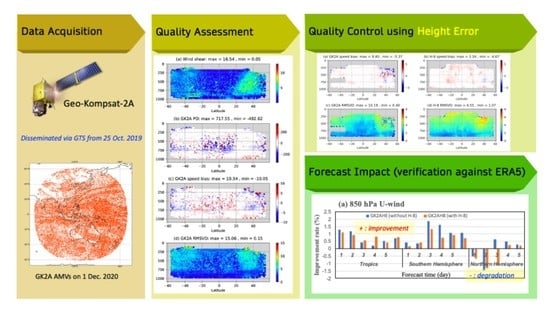Assessment of Geo-Kompsat-2A Atmospheric Motion Vector Data and Its Assimilation Impact in the GEOS Atmospheric Data Assimilation System
Abstract
1. Introduction
2. Data and Methods
2.1. Geo-Kompsat-2A AMV Datasets
2.2. Initial Quality Assessment of GK2A AMV Data
2.3. Height Assignment Error
2.4. Quality Control
- Remove all the wind data above 150 hPa or the tropopause;
- Remove all the data from the surface to 950 hPa;
- Remove all the data with QIFY smaller than 90 and with satellite zenith angle (SAZA) larger than 64°;
- For the VIS winds, reject data above 700 hPa;
- For the WV winds, reject data below 400 hPa;
- For the IR winds, reject data over land if lat > 20°N;
- Reject IR and VIS winds derived using the EBBT method between 600 hPa and 800 hPa in the Southern Hemisphere to remove slow wind speed bias;
- Reject IR winds derived using IR/WV intercept below 400 hPa;
- A strict gross error check to eliminate the observation outside of tolerances from the model wind vector;
- A height error check to eliminate the observation with large wind speed bias and RMSVD.
2.5. Observing System Experiment Design
3. Results
3.1. Analysis Impact
3.2. Forecast Impact
3.2.1. Verification against Era5 Analysis
3.2.2. Forecast Sensitivity Observation Impact
4. Summary and Discussion
Author Contributions
Funding
Data Availability Statement
Acknowledgments
Conflicts of Interest
References
- Lean, K.; Bormann, N.; Salonen, K. Assessment of Himawari-8 AMV data in the ECMWF System (EUMETSAT/ECMWF Fellowship Programme Research Reports No. 42). Available online: https://www.ecmwf.int/node/16972 (accessed on 25 September 2022).
- Lean, K.; Bormann, N. Moving to GOES-16: A New Generation of GOES AMVs. (EUMETSAT/ECMWF Fellowship Programme Research Report No. 49). Available online: https://www.ecmwf.int/node/18860 (accessed on 25 September 2022).
- Kim, D.-H.; Kim, H.M. Effect of assimilating Himawari-8 atmospheric motion vectors on forecast errors over East Asia. J. Atmos. Ocean. Technol. 2018, 35, 1737–1752. [Google Scholar] [CrossRef]
- Oh, S.M.; Borde, R.; Carranza, M.; Shin, I.-C. Development and Intercomparison Study of an Atmospheric Motion Vector Retrieval Algorithm for GEO-KOMPSAT-2A. Remote Sens. 2019, 17, 2054. [Google Scholar] [CrossRef]
- Otsuka, M.; Seko, H.; Shimoji, K.; Yamashita, K. Characteristics of Himawari-8 rapid scan atmospheric motion vectors utilized in mesoscale data assimilation. J. Meteorol. Soc. Jpn. 2018, 96B, 111–131. [Google Scholar] [CrossRef]
- Mallick, S.; Jones, T.A. Assimilation of GOES-16 satellite derived winds into the warn-on-forecast system. Atmos. Res. 2020, 245, 105131. [Google Scholar] [CrossRef]
- Chen, Y.; Shen, J.; Fan, S.; Meng, D.; Wang, C. Characteristics of Fengyun-4A Satellite Atmospheric Motion Vectors and Their Impacts on Data Assimilation. Adv. Atmos. Sci. 2020, 37, 1222–1238. [Google Scholar] [CrossRef]
- Oyama, R.; Sawada, M.; Shimoji, K. Diagnosis of tropical cyclone intensity and structure using upper tropospheric atmospheric motion vectors. J. Meteorol. Soc. Jpn. 2018, 96B, 3–26. [Google Scholar] [CrossRef]
- Sawada, M.; Ma, Z.; Mehra, A.; Tallapragada, V.; Oyama, R.; Shimoji, K. Impacts of assimilating high-resolution atmospheric motion vectors derived from Himawari-8 on tropical cyclone forecast in HWRF. Mon. Weather Rev. 2019, 147, 3721–3740. [Google Scholar] [CrossRef]
- Li, J.; Velden, C.; Wang, P.; Schmit, T.J.; Sippel, J. Impact of rapid-scan-based dynamical information from GOES-16 on HWRF hurricane forecasts. J. Geophys. Res. Atmos. 2020, 125, e2019JD031647. [Google Scholar] [CrossRef]
- Leese, J.A.; Novak, C.S.; Clark, B.B. An automated technique for obtaining cloud motion from geosynchronous satellite data using cross correlation. J. Appl. Meteor 1971, 10, 118–132. [Google Scholar] [CrossRef]
- Smith, E.; Phillips, D. Automated cloud tracking using precisely aligned digital ATS pictures. IEEE Trans. Comput. 1972, C-21, 715–729. [Google Scholar] [CrossRef]
- Schmetz, J.; Holmlund, K.; Homan, J.; Strauss, B.; Mason, B.; Gaertner, V.; Koch, A.; Van De Berg, L. Operational Cloud-Motion Winds from Meteosat Infrared Images. J. Appl. Meteorol. 1993, 32, 1206–1225. [Google Scholar] [CrossRef]
- Nieman, S.J.; Menzei, W.P.; Hayden, C.M.; Gray, D.; Wanzong, S.T.; Velden, C.S.; Daniels, J. Fully Automated Cloud—Drift Winds in NESDIS Operations. Bull. Am. Meteorol. Soc. 1997, 78, 1121–1134. [Google Scholar] [CrossRef]
- Rohn, M.; Kelly, G.; Saunders, R. Impact of a new cloud motion wind product from Meteosat on NWP analyses and forecasts. Mon. Weather Rev. 2001, 129, 2392–2403. [Google Scholar] [CrossRef]
- Bormann, N.; Thépaut, J.-N. Impact of MODIS polar winds in ECMWF’s 4DVAR data assimilation system. Mon. Weather Rev. 2010, 132, 929–940. [Google Scholar] [CrossRef]
- Marshall, J.L.; Jung, J.; Zapotocny, T.; Redder, T.; Dunn, M.; Daniels, J.; Riishojgaard, L.P. Impact of MODIS atmospheric motion vectors on a global NWP system. Aust. Meteorol. Mag. 2008, 57, 45–51. [Google Scholar]
- Santek, D. The Impact of satellite-derived polar winds on lower-latitude forecasts. Mon. Weather Rev. 2010, 138, 123–139. [Google Scholar] [CrossRef]
- Joo, S.; Eyre, J.; Marriott, R. The impact of MetOp and other satellite data within the Met Office Global NWP system using an adjoint-based sensitivity method. Mon. Weather Rev. 2013, 140, 3331–3342. [Google Scholar] [CrossRef]
- Kim, S.M.; Kim, H.M. Forecast Sensitivity Observation Impact in the 4DVAR and Hybrid-4DVAR Data Assimilation Systems. J. Atmos. Ocean. Technol. 2019, 36, 1563–1575. [Google Scholar] [CrossRef]
- Marshall, J.L.; Rea, A.; Leslie, L.; Seecamp, R. Dunn M. Error characterisation of atmospheric motion vectors Aust. Meteorol. Mag. 2004, 53, 123–131. [Google Scholar]
- Nieman, S.J.; Schmetz, J.; Menzel, W.P. A Comparison of Several Techniques to Assign Heights to Cloud Tracers. J. Appl. Meteorol. 1993, 32, 1559–1568. [Google Scholar] [CrossRef]
- Borde, R.; Doutriaux-Boucher, M.; Dew, G.; Carranza, M. A Direct Link between Feature Tracking and Height Assignment of Operational EUMETSAT Atmospheric Motion Vectors. J. Atmos. Ocean. Technol. 2013, 31, 33–46. [Google Scholar] [CrossRef]
- Forsythe, M.; Saunders, R. AMV errors: A new approach in NWP. In Proceedings of the 9th International Wind Workshop, Annapolis, ML, USA, 14–18 April 2008; pp. 14–18. [Google Scholar]
- Velden, C.S.; Bedka, K.M. Identifying the uncertainty in determining satellite-derived atmospheric motion vector height attribution. J. Appl. Meteorol. Climatol. 2009, 49, 450–463. [Google Scholar] [CrossRef]
- Kim, D.; Gu, M.; Oh, T.-H.; Kim, E.-K.; Yang, H.-J. Introduction of the Advanced Meteorological Imager of Geo-Kompsat-2a: In-Orbit Tests and Performance Validation. Remote Sens. 2021, 13, 1303. [Google Scholar] [CrossRef]
- Lee, E.; Kim, Y.; Sohn, E.; Cotton, J.; Saunders, R. Application of hourly COMS AMVs in KMA operation. In Proceedings of the 11th International Winds Workshop, Auckland, New Zealand, 20–24 February 2012. [Google Scholar]
- Fritz, S.; Winston, J.S. Synoptic use of radiation measurements from satellite tiros ii. Mon. Weather Rev. 1993, 90, 1–9. [Google Scholar] [CrossRef]
- Szejwach, G. Determination of semi-transparent cirrus cloud temperature from infrared radiances: Applications to Meteosat. J. Appl. Meteorol. Climatol. 1982, 21, 384–393. [Google Scholar] [CrossRef]
- Menzel, W.P.; Smith, W.L.; Stewart, T.R. Improved Cloud Motion Wind Vector and Altitude Assignment Using VAS. J. Appl. Meteorol. Climatol. 1983, 22, 377–384. [Google Scholar] [CrossRef]
- Holmlund, K. The Utilization of Statistical Properties of Satellite-Derived Atmospheric Motion Vectors to Derive Quality Indicators. Weather Forecast. 1998, 13, 1093–1104. [Google Scholar] [CrossRef]
- Holmlund, K.; Velden, C.S.; Rohn, M. Enhanced automated quality control applied to high-density satellite-derived winds. Mon. Weather Rev. 2001, 129, 517–529. [Google Scholar] [CrossRef]
- Santek, D.; Dworak, R.; Nebuda, S.; Wanzong, S.; Borde, R.; Genkova, I.; García-Pereda, J.; Negri, R.; Carranza, M.; Nonaka, K.; et al. Atmospheric Motion Vector (AMV) Intercomparison Study. Remote Sens. 2018, 11, 2240. [Google Scholar] [CrossRef]
- Forsythe, M.; Doutriaux-Boucher, M. Second Analysis of the Data Displayed on the NWP SAF AMV Monitoring Website. NWP SAF Technical Report 20. Available online: https://nwpsaf.eu/monitoring/amv/nwpsaf_mo_tr_020.pdf (accessed on 13 December 2005).
- Salonen, K.; Cotton, J.; Bormann, N.; Forsythe, M. Characterizing AMV height-assignment error by comparing best-fit pressure statistics from the Met Office and ECMWF data assimilation systems. J. Appl. Meteorol. Climatol. 2015, 54, 5647–5653. [Google Scholar] [CrossRef]
- Hernandez-Carrascal, A.; Bormann, N. Atmospheric motion vectors from model simulations. Part II: Interpretation as spatial and vertical averages of wind and role of clouds. J. Appl. Meteorol. Climatol. 2014, 53, 65–82. [Google Scholar] [CrossRef][Green Version]
- Lean, P.; Migliorini, S.; Kelly, G. Understanding atmospheric motion vector vertical representativity using a simulation study and first-guess departure statistics. J. Appl. Meteorol. Climatol. 2015, 54, 2479–2500. [Google Scholar] [CrossRef]
- Molod, A.; Takacs, L.; Suarez, M.; Bacmeister, J. Development of the GEOS-5 Atmospheric General Circulation Model: Evolution from MERRA to MERRA2. Geosci. Model Dev. 2015, 8, 1339–1356. [Google Scholar] [CrossRef]
- Kleist, D.T.; Parrish, D.F.; Derber, J.C.; Treadon, R.; Errico, R.M.; Yang, R. Improving incremental balance in the GSI 3dvar analysis system. Mon. Weather Rev. 2009, 137, 1046–1060. [Google Scholar] [CrossRef]
- Kleist, D.T.; Ide, K. An OSSE-based evaluation of hybrid variational-ensemble data assimilation for the NCEP GFS, Part I: System description and 3D-hybrid results. Mon. Weather Rev. 2015, 143, 433–451. [Google Scholar] [CrossRef]
- Kleist, D.T.; Ide, K. An OSSE-based evaluation of hybrid variational-ensemble data assimilation for the NCEP GFS, Part II: 4D EnVar and hybrid variants. Mon. Weather Rev. 2015, 143, 452–470. [Google Scholar] [CrossRef]
- Todling, R.; El Akkraoui, A. The GMAO Hybrid Ensemble-Variational Atmospheric Data Assimilation System: Version 2.0. NASA/TM-2018-104606/Vol. 50. 184p. Available online: https://gmao.gsfc.nasa.gov/pubs/docs/Todling1019.pdf (accessed on 22 September 2022).
- Takacs, L.L.; Suárez, M.J.; Todling, R. The stability of incremental analysis update. Q. J. R. Meteorol. Soc. 2018, 146, 3259–3275. [Google Scholar] [CrossRef]
- Hersbach, H.; Bell, B.; Berrisford, P.; Hirahara, S.; Horányi, A.; Muñoz-Sabater, J.; Nicolas, J.; Peubey, C.; Radu, R.; Schepers, D.; et al. The ERA5 global reanalysis. QJRMS 2020, 146, 1999–2049. [Google Scholar] [CrossRef]
- Stephens, L.J. Shaum’s Outline of Theory and Problems for Beginning Statistics; McGraw-Hill: New York, NY, USA, 1998; pp. 211–271. [Google Scholar]
- Žagar, N.; Andersson, E.; Fisher, M. Balanced tropical data assimilation based on study of equatorial waves in ECMWF short-range forecast errors. Q. J. R. Meteorol. Soc. 2004, 131, 987–1011. [Google Scholar] [CrossRef]
- Langland, R.H.; Baker, N. Estimation of observation impact using the NRL atmospheric variational data assimilation adjoint system. Tellus 2004, 56, 189–201. [Google Scholar] [CrossRef]
- Trémolet, Y. First-order and higher-order approximations of observation impact. Meteorologische Zeitschrift 2007, 16, 693–694. [Google Scholar] [CrossRef]


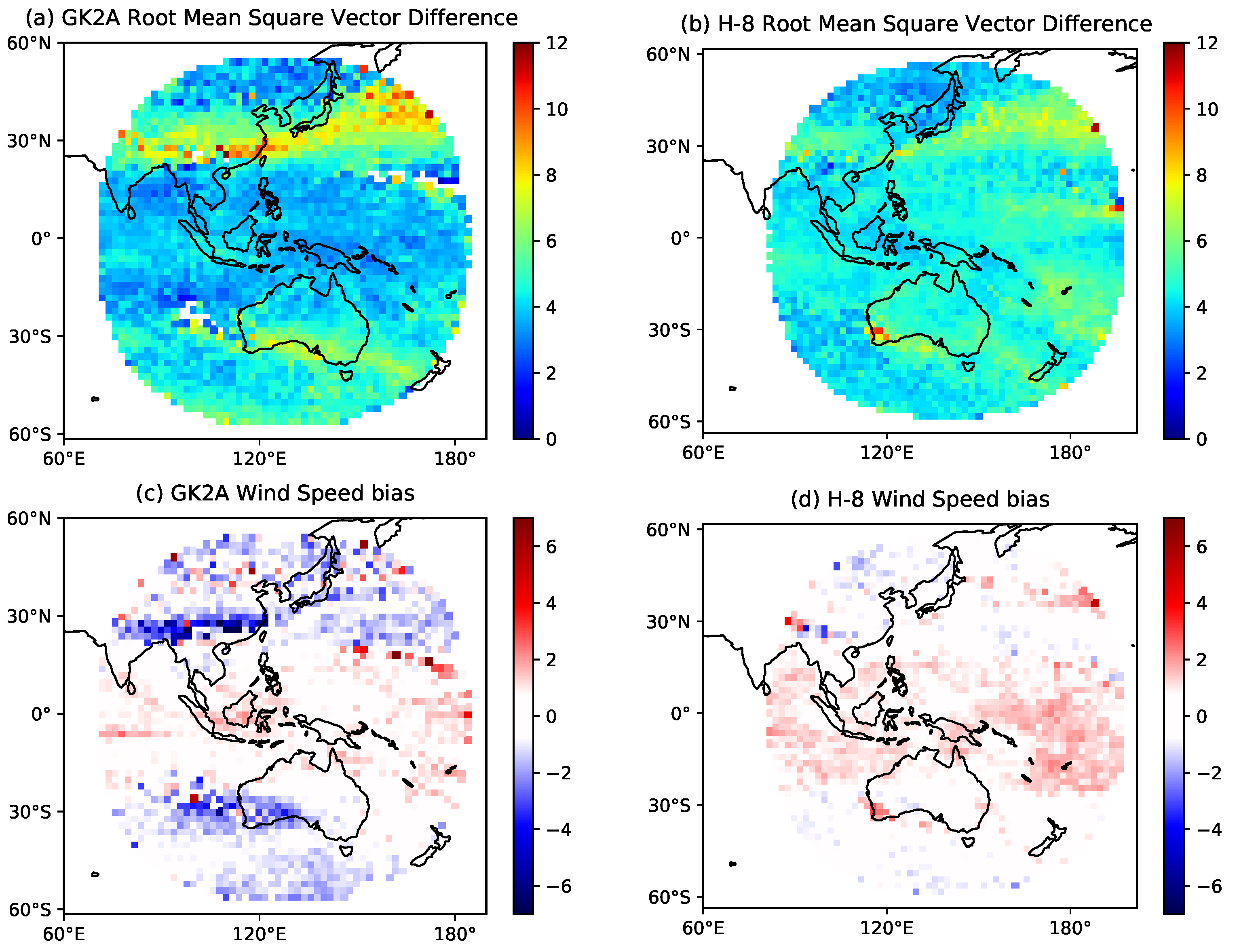


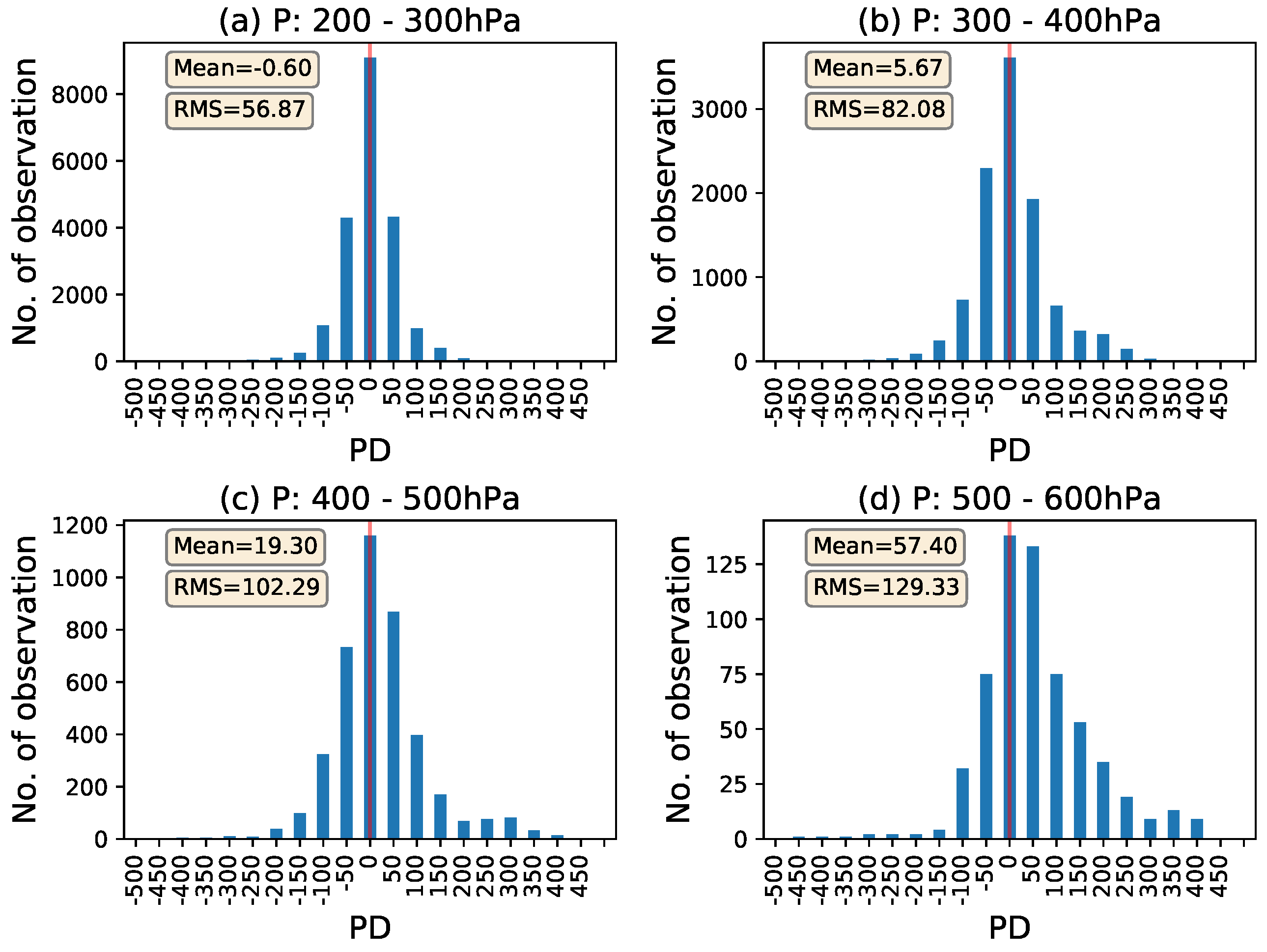

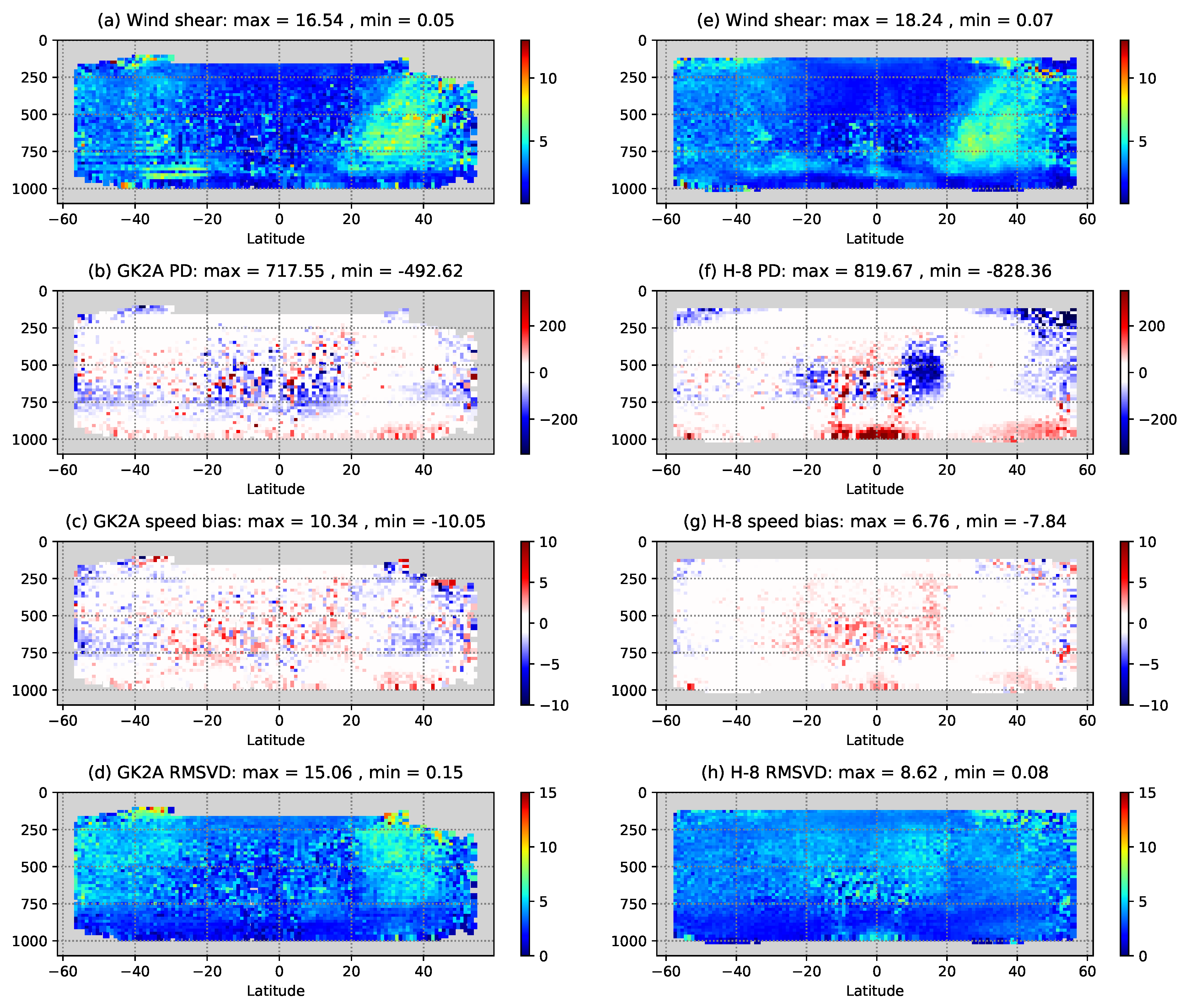
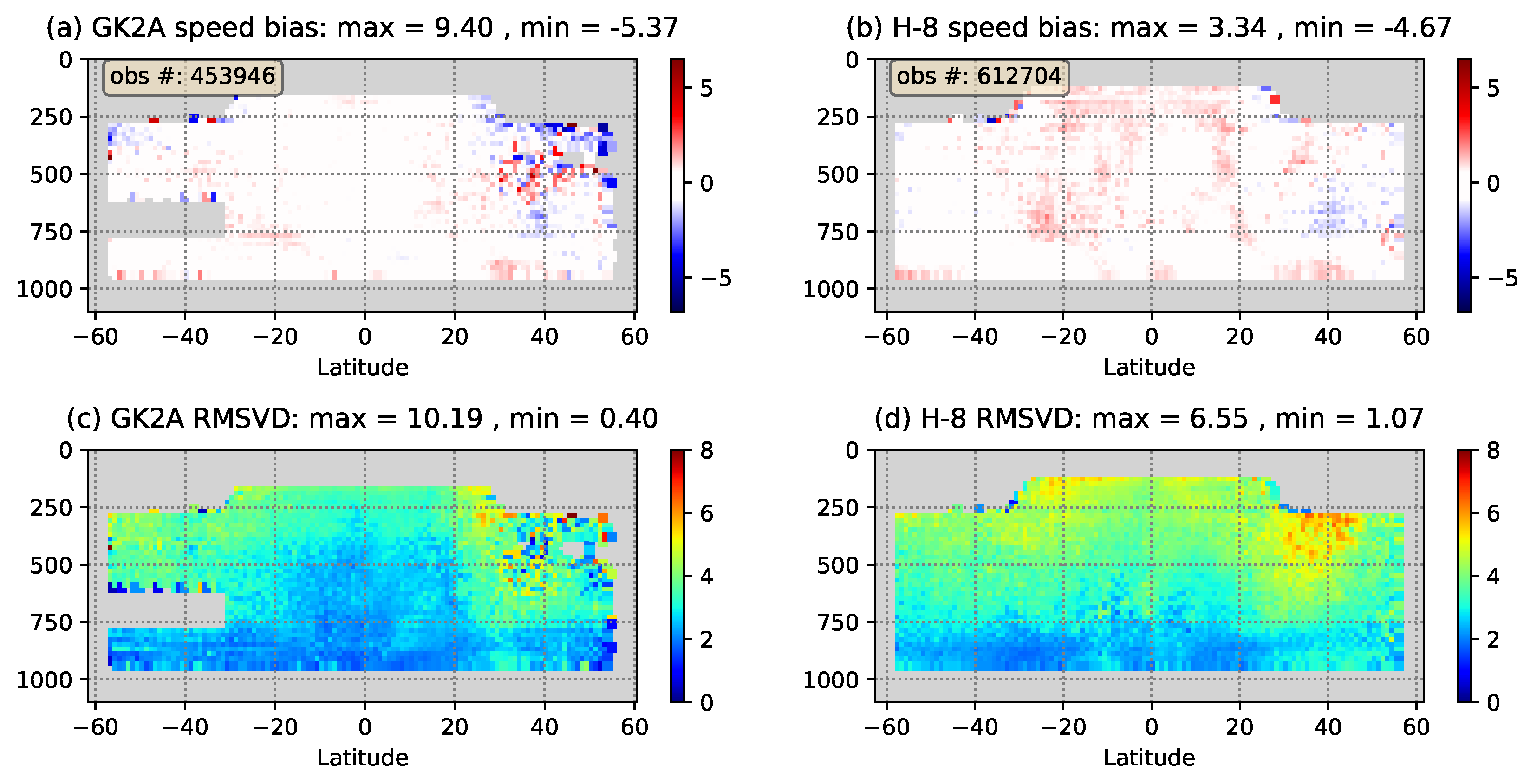
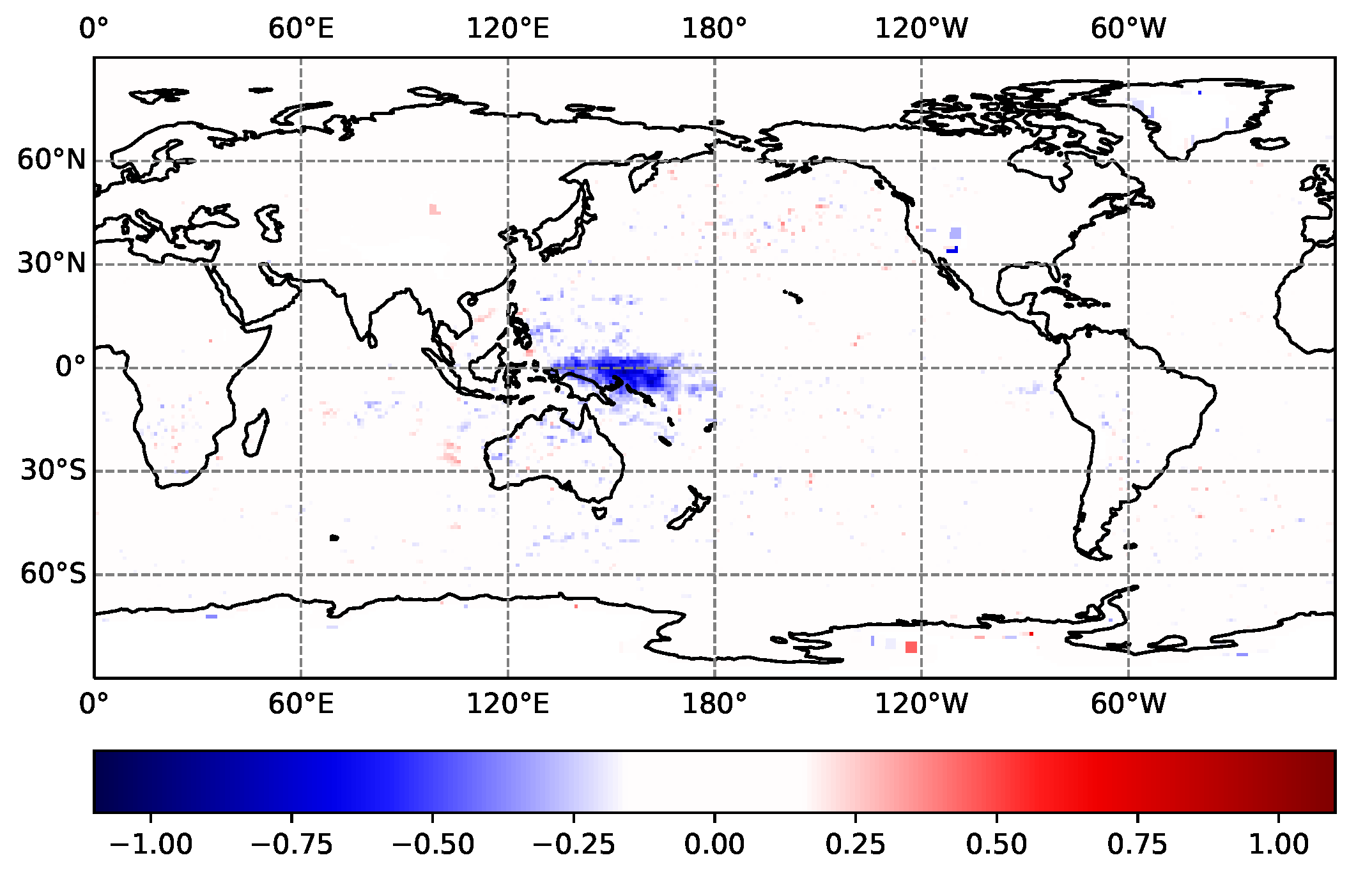
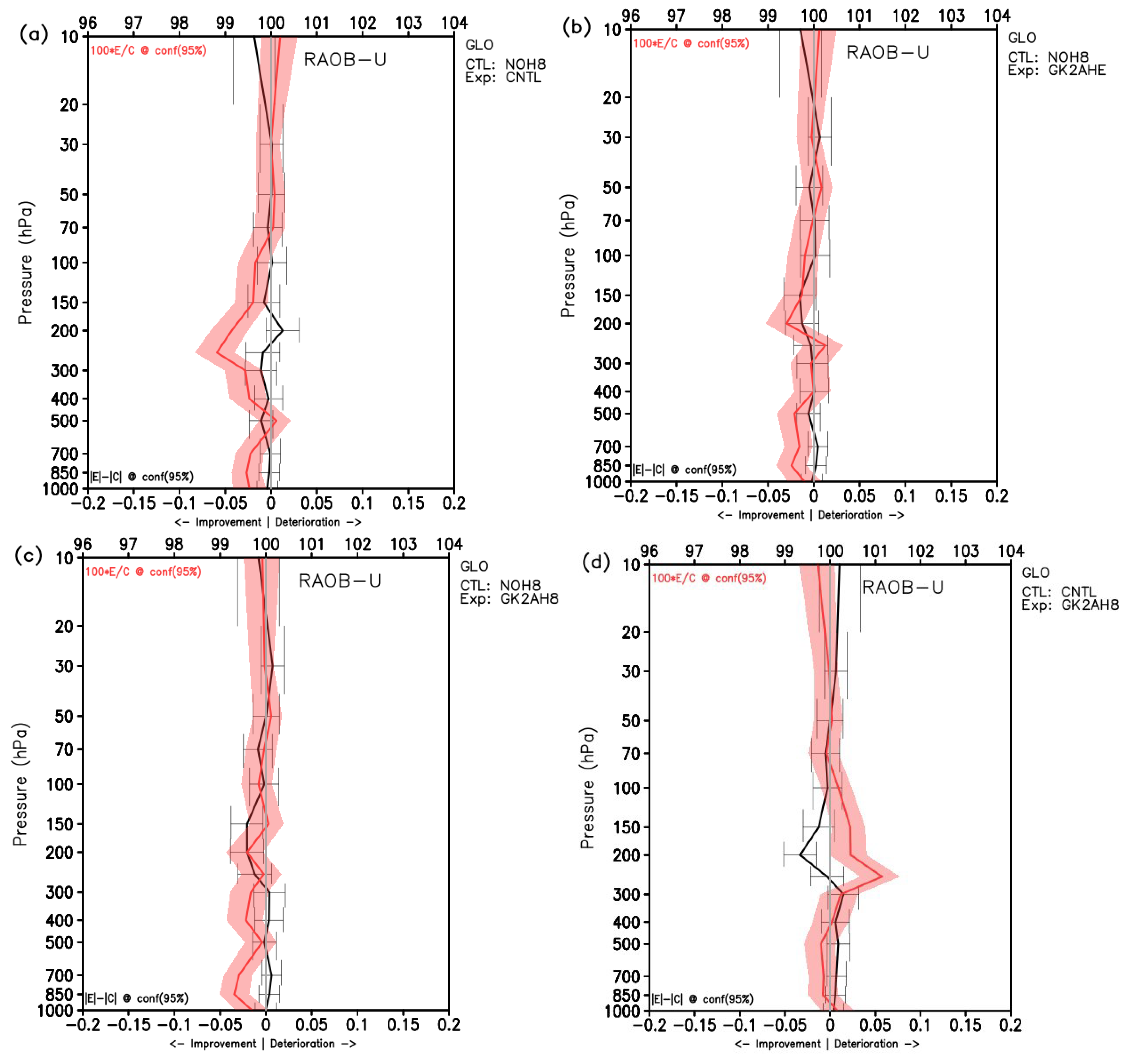
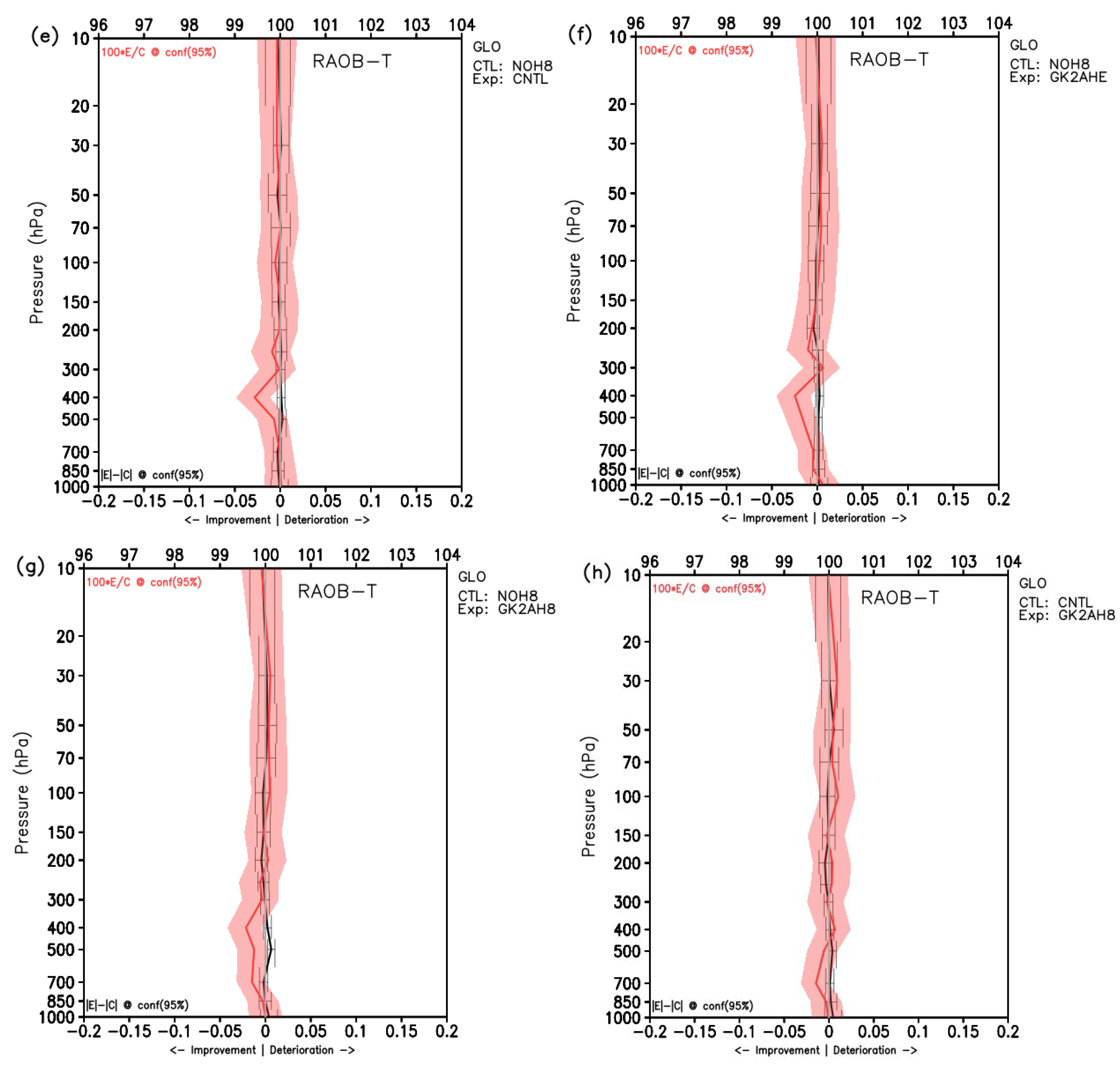
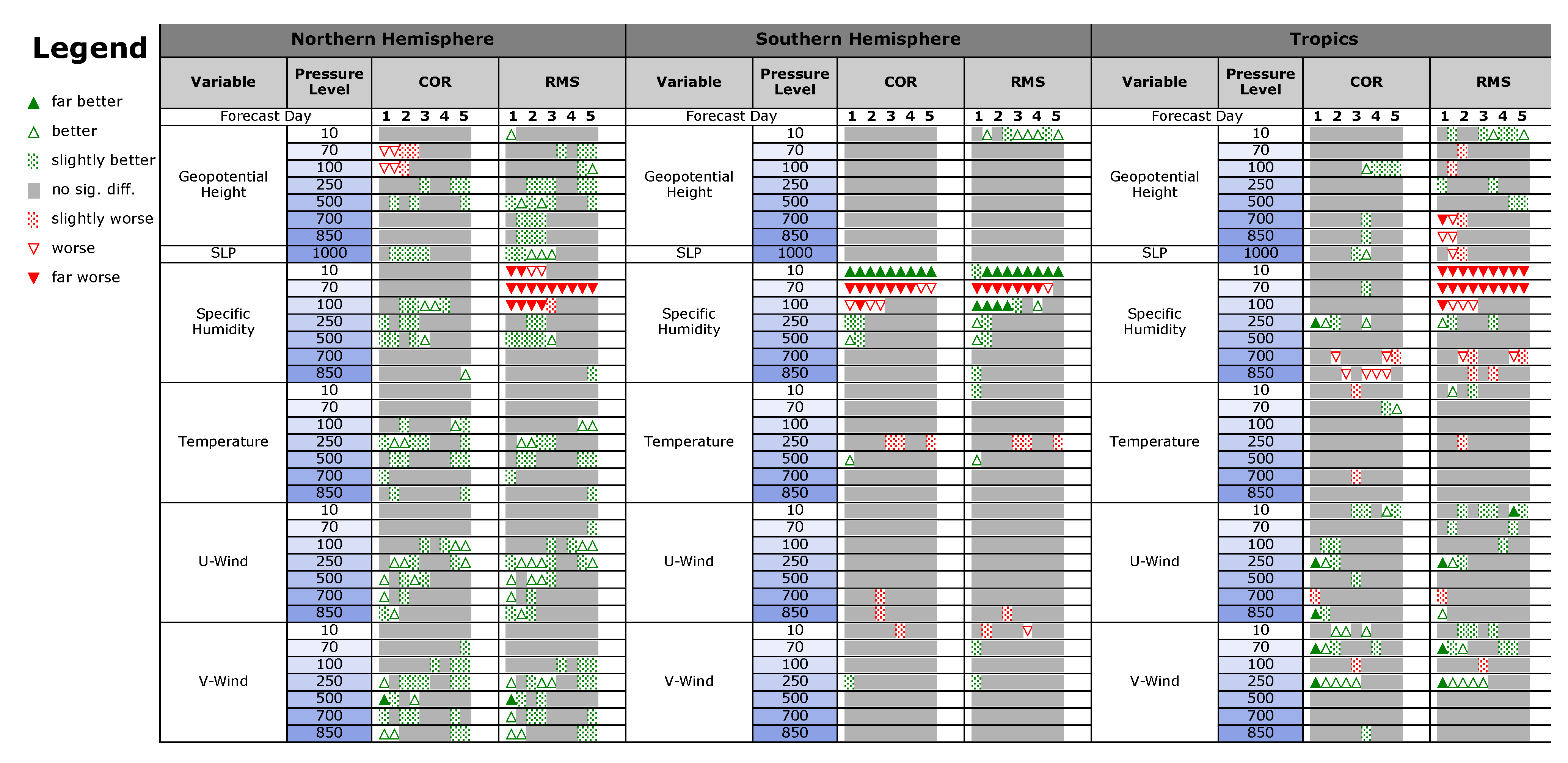
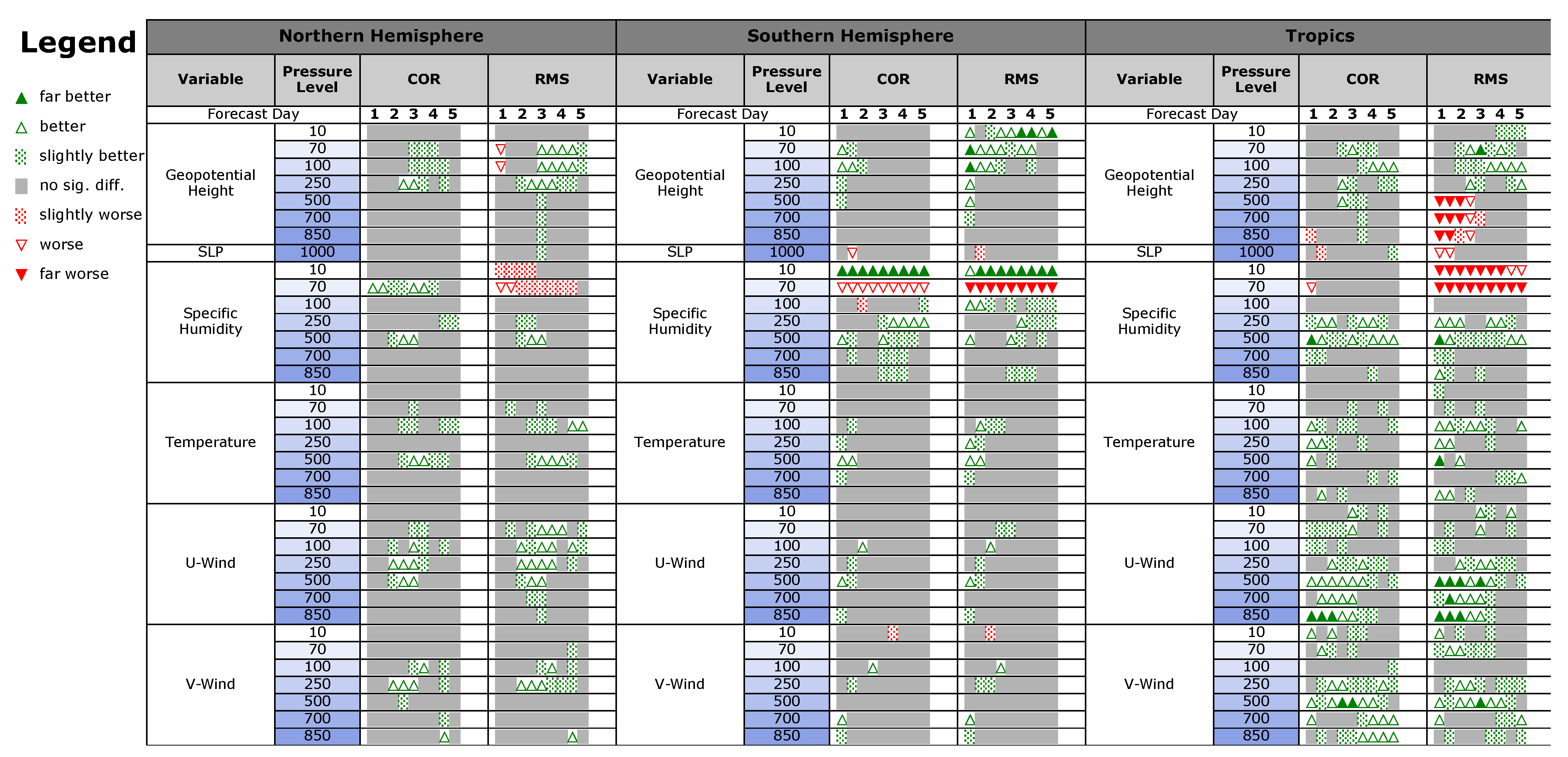
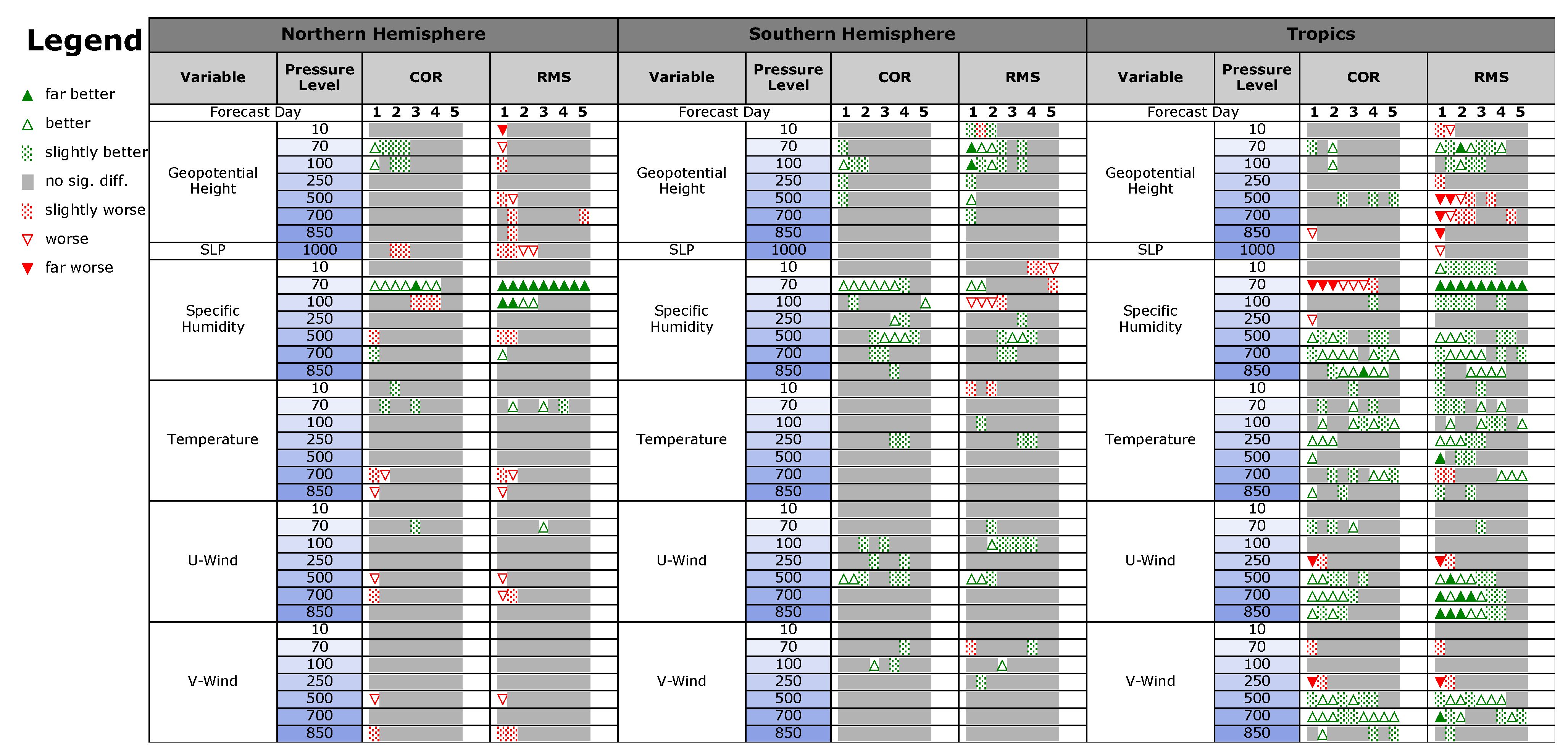
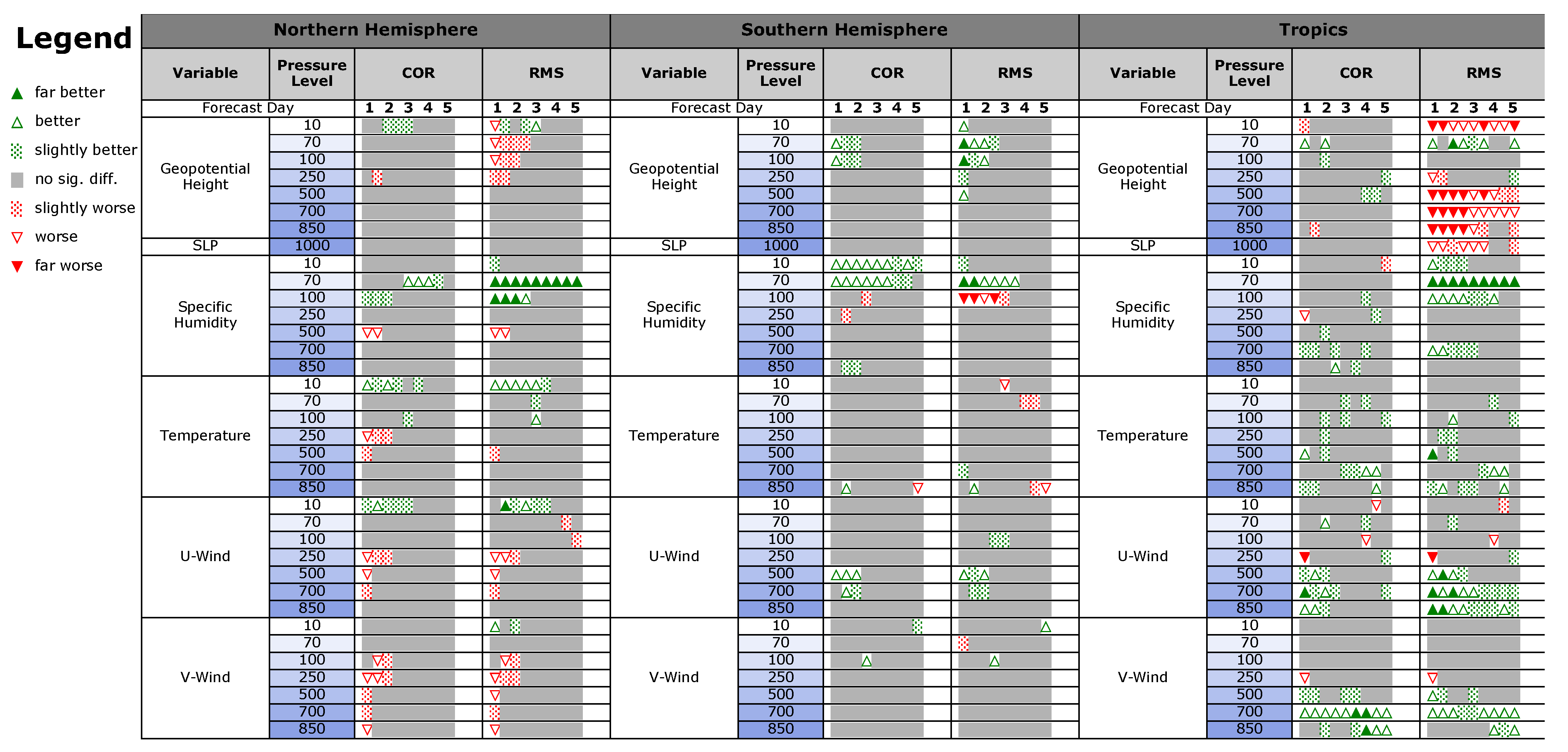

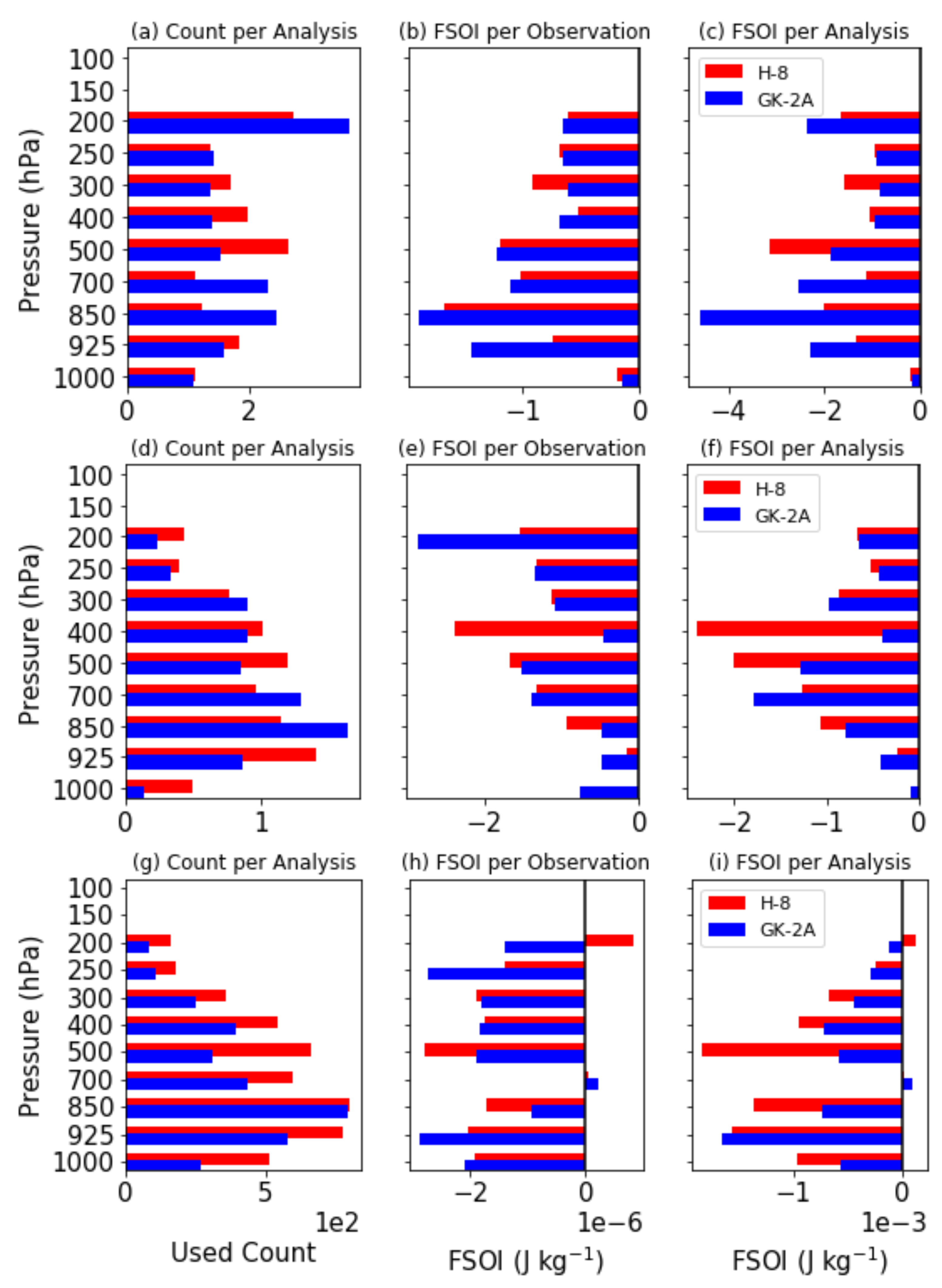
| AMI | AHI | |||||
|---|---|---|---|---|---|---|
| Channel | Band | Spatial Resolution (km) | Central Wavelength (µm) | Band Width (µm) | Central Wavelength (µm) | Band Width (µm) |
| VIS | 3 | 0.5 | 0.639 | 0.081 | 0.0645 | 0.03 |
| SWIR | 7 | 2.0 | 3.83 | 0.19 | 3.85 | 0.22 |
| WV | 8 | 2.0 | 6.21 | 0.84 | 6.25 | 0.12 |
| 9 | 2.0 | 6.94 | 0.40 | 6.95 | 0.12 | |
| 10 | 2.0 | 7.33 | 0.18 | 7.35 | 0.17 | |
| IR | 13 | 2.0 | 10.35 | 0.47 | 10.45 | 0.30 |
| 14 | 2.0 | 11.23 | 0.66 | 11.20 | 0.20 | |
| Experiments | Assimilated Observations |
|---|---|
| CNTL | All conventional + satellite observations |
| NOH8 | Remove H-8 AMVs from CNTL (baseline) |
| GK2AHE | Add GK2A AMVs to NOH8 |
| GK2AH8 | Add GK2A AMVs to CNTL |
Publisher’s Note: MDPI stays neutral with regard to jurisdictional claims in published maps and institutional affiliations. |
© 2022 by the authors. Licensee MDPI, Basel, Switzerland. This article is an open access article distributed under the terms and conditions of the Creative Commons Attribution (CC BY) license (https://creativecommons.org/licenses/by/4.0/).
Share and Cite
Lee, E.; Todling, R.; Karpowicz, B.M.; Jin, J.; Sewnath, A.; Park, S.K. Assessment of Geo-Kompsat-2A Atmospheric Motion Vector Data and Its Assimilation Impact in the GEOS Atmospheric Data Assimilation System. Remote Sens. 2022, 14, 5287. https://doi.org/10.3390/rs14215287
Lee E, Todling R, Karpowicz BM, Jin J, Sewnath A, Park SK. Assessment of Geo-Kompsat-2A Atmospheric Motion Vector Data and Its Assimilation Impact in the GEOS Atmospheric Data Assimilation System. Remote Sensing. 2022; 14(21):5287. https://doi.org/10.3390/rs14215287
Chicago/Turabian StyleLee, Eunhee, Ricardo Todling, Bryan M. Karpowicz, Jianjun Jin, Akira Sewnath, and Seon Ki Park. 2022. "Assessment of Geo-Kompsat-2A Atmospheric Motion Vector Data and Its Assimilation Impact in the GEOS Atmospheric Data Assimilation System" Remote Sensing 14, no. 21: 5287. https://doi.org/10.3390/rs14215287
APA StyleLee, E., Todling, R., Karpowicz, B. M., Jin, J., Sewnath, A., & Park, S. K. (2022). Assessment of Geo-Kompsat-2A Atmospheric Motion Vector Data and Its Assimilation Impact in the GEOS Atmospheric Data Assimilation System. Remote Sensing, 14(21), 5287. https://doi.org/10.3390/rs14215287






